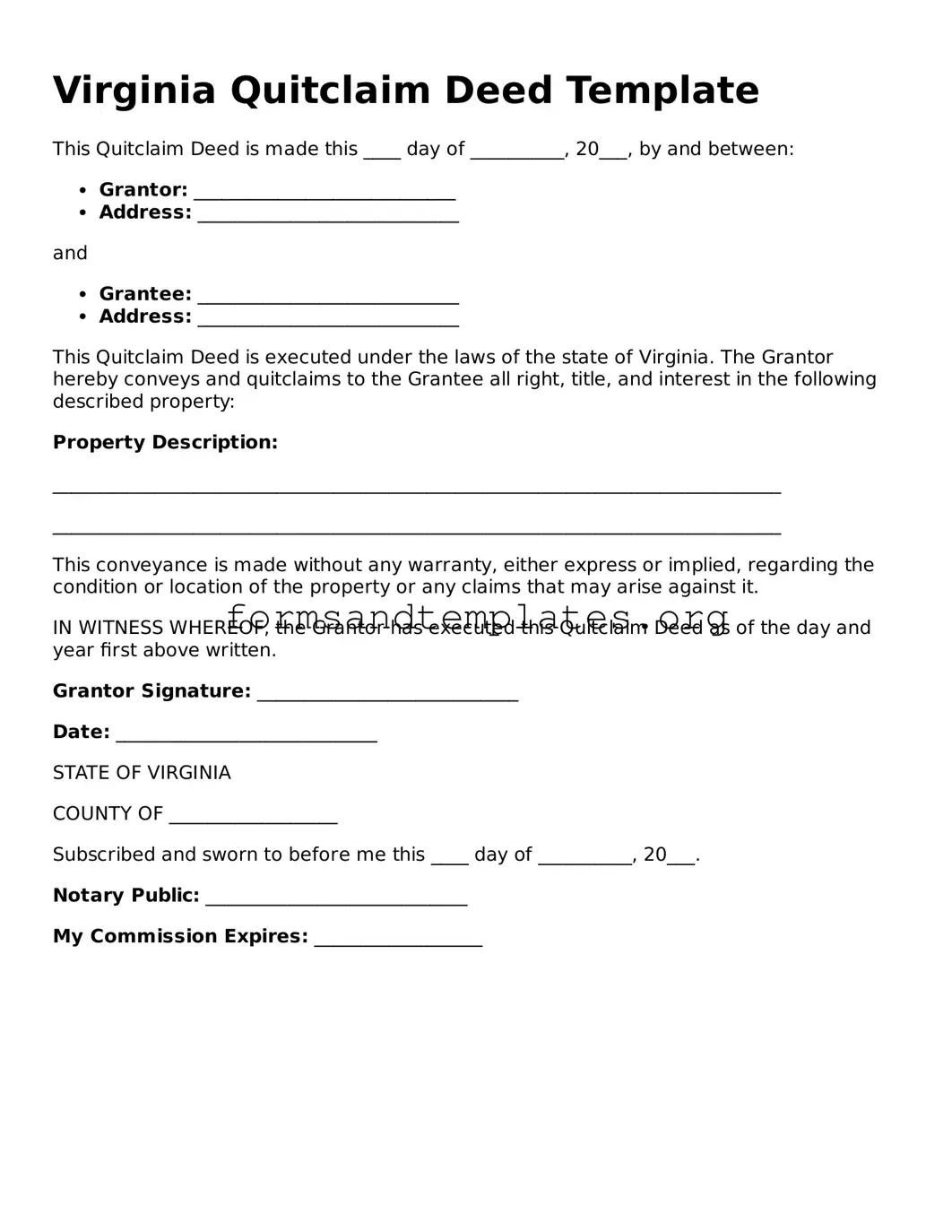Virginia Quitclaim Deed Template
This Quitclaim Deed is made this ____ day of __________, 20___, by and between:
- Grantor: ____________________________
- Address: ____________________________
and
- Grantee: ____________________________
- Address: ____________________________
This Quitclaim Deed is executed under the laws of the state of Virginia. The Grantor hereby conveys and quitclaims to the Grantee all right, title, and interest in the following described property:
Property Description:
______________________________________________________________________________
______________________________________________________________________________
This conveyance is made without any warranty, either express or implied, regarding the condition or location of the property or any claims that may arise against it.
IN WITNESS WHEREOF, the Grantor has executed this Quitclaim Deed as of the day and year first above written.
Grantor Signature: ____________________________
Date: ____________________________
STATE OF VIRGINIA
COUNTY OF __________________
Subscribed and sworn to before me this ____ day of __________, 20___.
Notary Public: ____________________________
My Commission Expires: __________________
